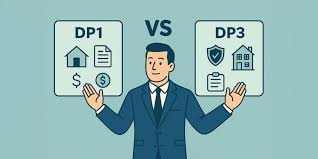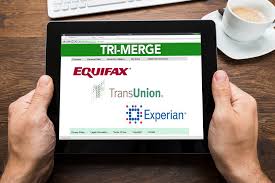This guide is for reverse mortgage borrowers.
It provides information on:
- Your reverse mortgage loan requirements
- How to pay off your reverse mortgage loan
- How moving out of your home or dying affects your reverse mortgage loan
- What it means to default on your loan and where to find help
- What your heirs may need to know
In the guide, the term “you” refers to you, the borrower, and any other co-borrowers on the reverse mortgage loan.
Your reverse mortgage basics
Unlike a traditional mortgage, a reverse mortgage loan is repaid when the borrowers no longer live in the home. Because interest and fees are added to the loan balance each month, the amount you owe goes up—not down—over time. As your loan balance increases, your home equity decreases.
Your reverse mortgage responsibilities
Although you do not make monthly mortgage payments with a reverse
mortgage, there are three main requirements you must meet:
1. Your home must be your principal (meaning primary) residence
2. You must pay your property charges, like property taxes and homeowners
insurance, on time
3.You must keep your home in good condition
Requirement 1: Your home must be your principal residence
Your home must be your principal residence, meaning it must be where you spend the majority of the year. You can only have one principal residence at a time. As Table 1 shows, with a reverse mortgage, you can only be away from your home for a certain period of time.
| Length of time away | Effects on your reverse mortgage |
|---|---|
| You are away for more than two months, but less than six months, and there is no co-borrower living in the home | - Notify your lender or servicer so that your lender knows you continue to occupy the home as your principal residence. |
| You are away for more than six months for non-medical reasons and there is no coborrower living in the home | - Your home is no longer your principal residence and your loan must be paid back or satisfied through selling the property or deed-in-lieu of foreclosure. - Anyone living with you will have to move out unless they are able to pay back the loan. |
| You are away for more than 12 consecutive months in a healthcare facility such as a hospital, rehabilitation center, nursing home, or assisted living facility and there is no co-borrower living in the home | - Your home is no longer your principal residence and your loan must be paid back or satisfied through selling the property or deed-in-lieu of foreclosure. - Anyone living with you will have to move out unless they are able to pay back the loan or qualify as an Eligible Non-Borrowing Spouse. |
| There is a co-borrower in the home and you permanently move for any reason | - The co-borrower may continue to live in the home and receive loan payments, so long as they continue to fulfill the reverse mortgage loan requirements. |
I was asked to certify that I occupy my home. What is this? What if I forgot to respond?
Your lender or servicer will require you to certify each year that your home is your principal residence. Usually this is done through a postcard or other notice sent by mail at the same time each year. If your spouse is designated as an “Eligible Non-Borrowing Spouse” in the loan documents, you will also
need to certify that you are still married and that your spouse lives in the home as their principal residence. To be an ‘Eligible Non-Borrowing Spouse’ means that your spouse is not a co-borrower, but qualifies under HUD’s rules to stay in the home after you move into a healthcare facility for more than 12 consecutive
months or pass away. It is important that you sign and return your annual occupancy certification immediately.
Requirement 2: You must pay your property charges on time
Property charges are fees you must pay under the reverse mortgage loan, which can include:
– Property taxes and homeowners insurance
– Flood insurance premiums
– Ground rent, condominium fees, planned unit development fees, or homeowners’ association fees
– Any other special assessments
Paying your property charges
- For loans made before April 27, 2015: at the time the loan documents were signed, you could have requested that your lender or servicer pay the property taxes and homeowners insurance from the reverse mortgage loan funds, but you were not required to do so. Generally, borrowers need to budget each year to make sure the taxes and insurance are paid on time.
- For loans made after April 27, 2015: lenders evaluate your ability to pay future property taxes and homeowners insurance when making the loan. As shown in Table 2, your lender may require you to set aside loan proceeds to pay future property taxes and homeowners insurance.
PAYING PROPERTY CHARGES FOR LOANS AFTER APRIL 27, 2015
| Lender's evaluation | Who pays the property taxes & homeowners insurance |
|---|---|
| If your lender determined that you had enough money to pay future property taxes and homeowners insurance | You can choose to: - Pay your property charges directly, or - Have your servicer pay your charges by using money from your reverse mortgage funds. |
| If your lender determined that you need to “set aside” a portion of your loan proceeds as a reserve to pay your property taxes and homeowners insurance | Your lender will choose to: - Pay your property taxes and homeowners insurance directly from the reserve, or - Send you the money so that you can make these payments. |
- If you are unsure if loan money was set aside, check your monthly account statement or contact your lender or servicer.
- If the reserve can no longer cover your property taxes or homeowners insurance, your lender or servicer will tell you.
Managing your property taxes
Here are some ways you can manage your property taxes.
– You may be eligible to lower your tax payments if your state offers a tax relief program for older homeowners. If your state has a senior property tax exemption, you may need to apply to receive the benefit. Many state programs require you to apply shortly after the tax bill is issued. To learn
more, contact your local tax collector.
– It is important to tell your lender or servicer if you are paying your property taxes in installments. You do not want them to mistakenly believe that you missed a payment.
– If your lender wrongly determines that your loan is in default for unpaid property taxes, contact your lender or servicer immediately. Be ready to show proof that you have paid your property taxes.
Failure to pay property taxes
If your loan falls into default due to unpaid property charges, immediately talk to your lender or servicer. You can ask for help from a HUD-approved housing counseling agency or an attorney.
After you default, you may be able to rehabilitate the loan through a repayment plan or an “at-risk extension.” To qualify for an at-risk extension, you must be at least 80 years old and experiencing critical circumstances, such as a long-term disability, terminal illness, or a unique need to stay in the property. You may request to renew the at-risk extension every year with proof of your need.
Requirement 3: You must keep your home in good condition
When you applied for your reverse mortgage loan, your lender evaluated whether your home met HUD‘s property requirements.
Now that you have the reverse mortgage loan, you must keep your home in good condition. Your lender or servicer may inspect your home’s condition if they give you notice and specify the purpose of the inspection. They also may tell you to make repairs.
How long do I have to make required repairs?
You generally have 60 days to start repairs from the day your lender or servicer notifies you. Failure to do so could lead to default or foreclosure.
What if I cannot afford to make required repairs?
Reach out to your local Area Agency on Aging (AAA) to find assistance programs that may be able to help you pay for repairs. To find the nearest AAA, call (800) 677-1116 or visit eldercare.acl.gov.
If you need to hire a contractor to perform repairs on your house, you may want to:
- Explore and compare your options. Get estimates from several contractors on the costs of repairs.
- Ask people you trust for referrals.
- Check if a contractor is licensed through your state’s contractors’ licensing board.
- Have a lawyer review the contract of -work.
- Read and understand the contract before you sign it. Make sure written contracts match any verbal promises made.
- Beware of contractors going door-to-door. Do not feel pressured into making a decision right away.
If you cannot meet the loan requirements
Default or foreclosure notices
If you receive a default or foreclosure notice, immediately contact your servicer to learn why. Unless steps are taken to fix the default, you may lose your home to foreclosure. Seek help from an attorney or a HUD-approved default housing counseling agency. Both can explain what options you have to prevent foreclosure.
Natural disasters
After a natural disaster, you may experience damage to your home, unexpected expenses, or a sudden loss of income. All these things may make it difficult for you to meet your reverse mortgage loan obligations. To find help, read the guide, Your reverse mortgage after a natural disaster, at cfpb.gov/prepare.
Paying back your loan
Unless there is a co-borrower living in the home, you must typically repay the loan when you no longer live in the home. You may need to pay it back sooner if you fail to meet the requirements of the loan.
Selling your house
If you decide to sell your home while you have a reverse mortgage loan, you will have to pay back the money borrowed, plus interest and fees. As shown in Table 3, the amount you receive from the sale of your home will determine how the loan is paid back.
HOW YOUR REVERSE MORTGAGE IS PAID IF YOU SELL YOUR HOME
| Your home | Money from the sale |
|---|---|
| You sell your home for at least the loan balance | - The loan is fully paid back. - You get to keep whatever money is left after paying back the loan. |
| You sell your home for at least the appraised market value | - The money from the sale pays off the outstanding loan balance. - Your mortgage insurance will pay any remaining balance if the sale does not cover the amount you owe. |
| Your reverse mortgage loan is in default and you have received a notice that the loan is “due and payable” | - You may sell your home for 95 percent of its appraised value or the amount owed on the loan, whichever is less. - The money from the sale will go towards paying the outstanding loan balance. - Your mortgage insurance will pay any remaining balance if the sale does not cover the loan balance. |
What happens to your loan after you pass away
Unless there is a co-borrower living in the home, when you pass away, the loan has to be paid back. As described below, when it must be paid back is complicated.
If you have a co-borrower on your loan
After a borrower passes away, any co-borrower on the loan may continue to receive the benefits of the reverse mortgage loan and may stay in the home as long as they continue to fulfill the loan obligations.
If a non-borrowing spouse lives in your home
Your non-borrowing spouse may stay in the home if they pay off the loan. They may also be able to stay in the home without paying off the loan, depending on when the loan was originated (meaning when it was taken out) and whether they qualify as an Eligible Non-Borrowing Spouse under HUD’s rules. The process may be difficult. Your non-borrowing spouse may want to get help from an attorney or a HUD-approved housing counseling agency.
For reverse mortgages originated on or after August 4, 2014
Your lender or servicer will determine if your non-borrowing spouse qualifies to stay in the home after you, the borrower, move into a healthcare facility for more than 12 consecutive months or pass away (called a “deferral period”). To qualify as an Eligible Non-Borrowing Spouse, your spouse must:
- Have been married to you at the time the loan documents were signed, and stay married to you up until your death. For couples who were unable to be legally married based on gender at the time the reverse mortgage loan was made, they must show that they were legally married by the time of the borrower’s death.
- Have been identified in the loan documents as a non-borrowing spouse.
- Have lived, and continue to live, in the home as their principal residence even after you move into a healthcare facility for more than 12 consecutive months or pass away.
- Continue to meet the loan requirements and make sure the loan does not become due and payable for any other reason.
For reverse mortgages originated before August 4, 2014
As explained in more detail below, after you, the borrower, move into a healthcare facility for more than more than 12 consecutive months or pass away, your lender or servicer can choose to either:
- Foreclose on the home, or
- Enter a process called “Mortgage Optional Election (MOE) Assignment” that allows an Eligible Non-Borrowing Spouse to stay in the home.
Foreclosure
If your lender or servicer decides to foreclose on your home or finds that your non-borrowing spouse does not qualify for MOE Assignment, they must begin foreclosure proceedings within six months of your death. If your non-borrowing spouse is actively trying to sell the property or satisfy the debt in some other way, they may request a delay of the foreclosure for up to 180 days.
Mortgage Optional Election (MOE) Assignment
If your lender or servicer decides not to foreclose and instead enters the MOE Assignment process, to qualify as an Eligible Non-Borrowing Spouse, your spouse must:
- Have been married to you at the time the loan documents were signed and remain married to you in situations in which you move into a healthcare facility for more than 12 consecutive months, or remain married up until your death. For couples who were unable to be legally married based on gender at the time the reverse mortgage loan was taken out, they must show that they were legally married by the time of the borrower’s death.
- Have lived in the home since the beginning of the loan, and continue to live in the home as their principal residence ever after you move into a healthcare facility for more than 12 consecutive months or pass away.
- Provide their Social Security number or Tax Identification Number.
- Agree that they will no longer receive any payments from the reverse mortgage loan.
- Continue to meet all loan obligations, including paying property taxes and homeowners insurance.
If you have heirs
If your heirs want to keep your home after you and your spouse pass away, they will have to repay either the full loan balance or 95 percent of the home’s appraised value – whichever is less.
Prepare any non-borrowing family members living in the home by deciding together what they will do after you pass away.
How to get help
If you’re having trouble with your reverse mortgage, here’s what you can do to get ahead:
- As a borrower, you have a right to request information from or dispute any errors with your lender or servicer. To learn more, visit consumerfinance.gov/askcfpb/1855.
- Consult an attorney. If you need help finding an attorney, contact your local or state bar association. You may qualify for free legal services. To find a legal aid office, visit lsc.gov.
- Talk to a housing counselor. HUD-approved housing counseling agencies offer free or low-cost expert assistance. You can find a housing counseling agency by visiting hud.gov or calling (800) 569-4287.
- Reach out to Area Agencies on Aging (AAA) to find state and local assistance programs that may be able to help you pay for property charges or needed home repairs. To find the nearest AAA, call (800) 677-1116 or visit eldercare.acl.gov.
- Submit a complaint with the CFPB if you are having problems with your lender or servicer by visiting consumerfinance.gov or calling toll-free (855) 411-CFPB (2372).
- List ItemFind more information on reverse mortgage issues at consumerfinance.gov/reversemortgage.
Reverse Mortgage Glossary
| DEFINED TERM | DEFINITION |
|---|---|
| Appraisal | A written document that shows an opinion of how much a property is worth. It describes what makes the property valuable and may show how it compares to other properties in the neighborhood. |
| Co-borrower | A person, usually the borrower’s spouse or partner, who also signs the reverse mortgage loan note and who is equally responsible for fulfilling all the loan obligations and who also receives the benefits from the loan. |
| Deed-in-lieu of foreclosure | An arrangement where the borrower voluntarily turns over ownership of the home to the lender to avoid the foreclosure process. |
| Default | The failure to meet the loan requirements included in the reverse mortgage. For example, the requirements of a Home Equity Conversion Mortgage (HECM) loan include occupying the home as the principal residence, keeping the home in good repair, and paying the property charges on time. A borrower’s failure to fulfill these obligations would cause the loan to fall into default and may lead to foreclosure. |
| Eligible Non-Borrowing Spouse | A borrower’s spouse who is not a co-borrower, but qualifies under HUD’s rules to stay in the home after the borrower moves into a healthcare facility for more than 12 consecutive months or passes away |
| Equity | The amount the property is currently worth, minus the amount owed on any existing mortgages on the property. |
| Federal Housing Administration (FHA) | The federal agency that insures HECMs, the most common type of reverse mortgage loan. FHA is part of the U.S. Department of Housing and Urban Development (HUD). |
| Foreclosure | The process where the lender takes back property because the borrower no longer fulfills the obligations of the reverse mortgage loan. Foreclosure processes differ by state. |
| Home Equity Conversion Mortgage (HECM) | The most common type of reverse mortgage today. One way they differ from private reverse mortgages (sometimes called “proprietary” reverse mortgages) is that HECMs are federally insured by the Federal Housing Administration (FHA). |
| Homeowners Insurance | Pays for losses and damage to the property if something unexpected happens, like a fire or burglary. Standard homeowners insurance doesn’t cover damage from earthquakes or floods, but it may be possible to add this coverage. Homeowners insurance is also sometimes referred to as "hazard insurance." Borrowers with a HECM loan are required to maintain homeowners insurance in addition to the mortgage insurance that is also required with a reverse mortgage loan. |
| HUD-Approved Housing Counseling Agency | An organization with housing counselors who are approved by HUD. Borrowers taking out a HECM reverse mortgage loan must receive counseling from a HUD-approved reverse mortgage counseling agency before receiving the loan. |
| Lender | The financial institution that loaned money to the borrower. |
| Loss Mitigation | The steps mortgage servicers take to work with a borrower to avoid foreclosure. Loss mitigation refers to a servicer’s responsibility to reduce or “mitigate” the loss to the investor that can come from a foreclosure. Certain loss mitigation options may help a borrower stay in their home. Other options may help a borrower leave their home without going through foreclosure. Loss mitigation options for reverse mortgage borrowers may include a deed-in-lieu of foreclosure or a repayment plan. |
| Maximum Claim Amount | The lesser of the appraised value of the home, the sale price of the home being purchased, or the maximum limit HUD will insure. The maximum claim amount is one factor used to calculate how much a homeowner can borrow with a reverse mortgage loan. |
| Mortgage Insurance Premium | An initial and annual amount charged by the lender and paid to the Federal Housing Administration (FHA). Mortgage insurance is required in addition to the homeowners insurance the borrower must maintain. |
| Non-Borrowing Spouse | A borrower’s spouse who is not a co-borrower on the reverse mortgage loan. |
| Origination Fees | A one-time upfront fee that the lender charges the borrower for making the loan. These fees are limited by the maximum claim amount and may not exceed $6,000. |
| Principal Limit | The amount of money the borrower can borrow with a reverse mortgage loan. The principal limit for a HECM is calculated using the age of the youngest borrower or Eligible Non-Borrowing Spouse, the interest rate on the loan, and the maximum claim amount. The principal limit generally will increase each month, possibly making additional funds available over time for borrowers with adjustable rate HECMs, but not fixed-rate HECMs. In general, loans with older borrowers, higher-priced homes, and lower interest rates will have higher principal limits than loans with younger borrowers, lower-priced homes, and higher interest rates. |
| Principal Residence | The property where the borrower, and if applicable, the non-borrowing spouse, maintain their permanent home and where they typically spend the majority of the year. A borrower may only have one principal residence at a time. |
| Proprietary Reverse Mortgage | Reverse mortgage loans that are not insured by the federal government and are typically designed for borrowers with higher home values than those insured by HUD. |
About the Consumer Financial Protection Bureau (CFPB)
The Consumer Financial Protection Bureau (CFPB) is a 21st century agency that helps consumer finance markets work by making rules more effective, by consistently and fairly enforcing those rules,
and by empowering consumers to take more control over their economic lives.
The CFPB Office for Older Americans develops initiatives, tools, and resources to help protect older consumers from financial harm and help older consumers make sound financial decisions as they age.
For more information about the CFPB, visit consumerfinance.gov.








